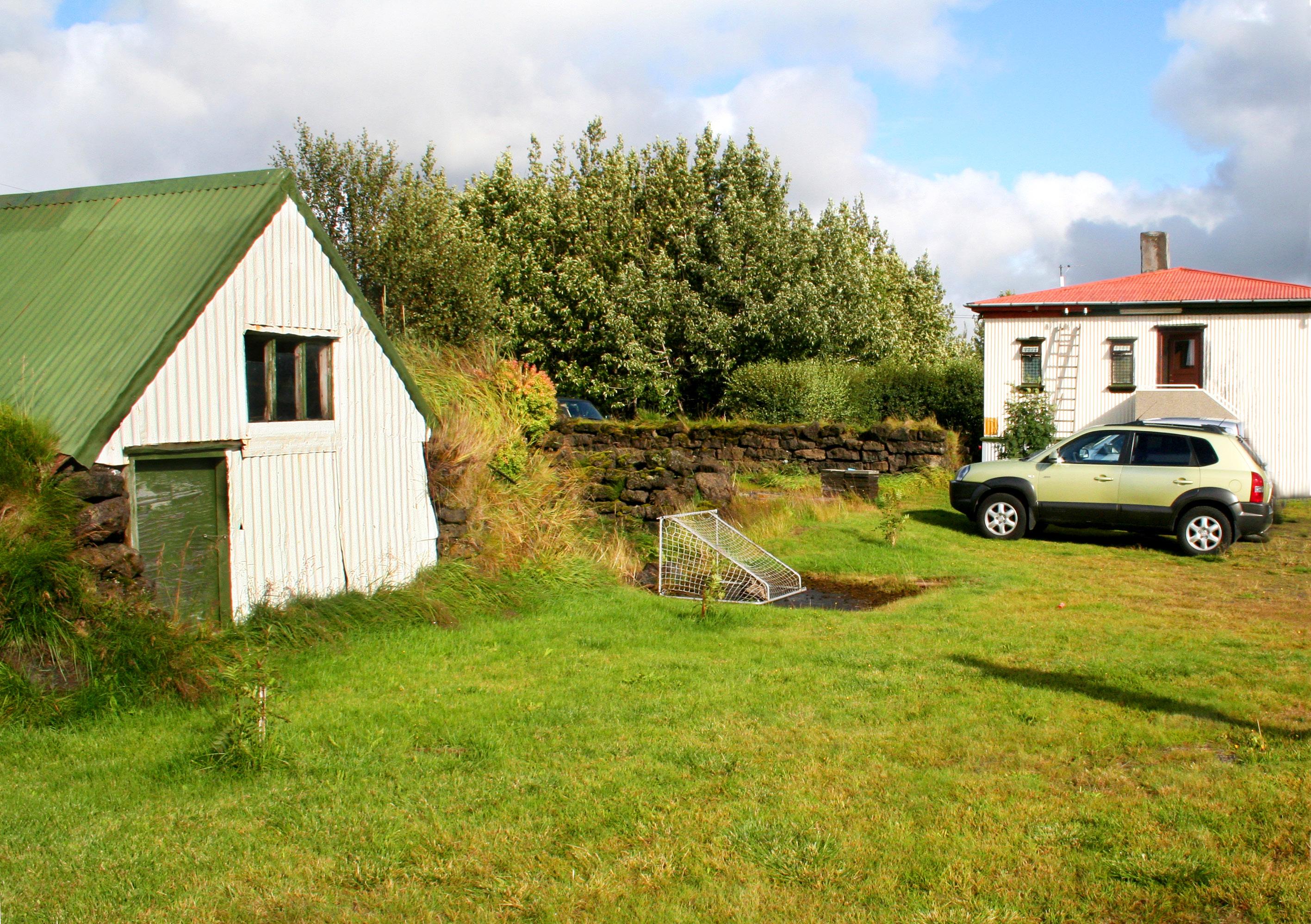
4 minute read
Mörk
from Thraedir_a_landi
by ferdalag
Skarðsfjall

Advertisement

JÓN AND GUÐRÚN Jón Finnbogason, from Reynifell in Rangárvellir and his wife, Guðrún Einarsdóttir, midwife, from Þverá in Fljótshlíð, started farming at Mörk in Land in 1827. He was then 31 years old and she 25. Previously they had farmed at Vatnagarður in the same area for a few years. In their hands, Mörk became a big farm and Jón came to be called “Jón the rich”.
THE FARM AND THE LAND The farm stood in the centre of the area called Landsveit, on the north-eastern end of the heath Baðsheiði, close to clear streams that alternatively bubble up from under lava fields and then dive back under them. To the west rises the Skarðsfjall, the mountain of the area and in the east soars Hekla, which from here seems taller and wider than from Reynifell. Þríhyrningur is to the south, in the distance.
JÓN AND GUÐRÚN´S MOTHERS Guðrún´s mother, Ragnhildur Sigurðardóttir, was with them in Vatnagarður and moved with them to Mörk. She had 10 children with her husband Einar Ásmundsson, farmer at Þverá, but he drowned at Suðurnes in 1818. Guðrún was the youngest of their children but only two of them lived to adulthood. Jón´s mother, Helga Teitsdóttir, widow of Finnbogi Þorgilsson at Reynifell, moved to Mörk in 1835.
JÓN AND GUÐRÚN´S CHILDREN Jón and Guðrún had 18 children in 21 years. Ten of the children died the year they were born and one of the children, Helga, b. 1842, lived for two years. Seven lived into adulthood, they were: Guðrún, b. 1828, d. 1889; Ragnhildur, b. 1830, d. 1924; Sigurður, b. 1831, d. 1877; Finnur, b. 1833, d. 1880; Höskuldur, b. 1835, d. 1907; Jónas, b. 1837, d. 1912; and Jóhann, b. 1839, d. 1901. They also fostered two children.
HEKLA ERUPTION 1845-1846 On the morning of the 2nd of September 1845, an eruption began in Hekla, with great earthquakes, explosions and commotion. The ash mostly carried to the east but lava flowed to the west and crawled down the gully Bæjargil by Næfurholt, the highest farm in Rangárvellir. People abandoned the farm but it was not submerged by the lava. The farmer who lived there moved the farm after the eruption and rebuilt, to the north under the mountain Bjólfell.
JÓN´S BROTHERS Jón Finnbogason´s brothers, Teitur and Árni, also became farmers in Landsveit. Teitur lived at Skarð from 1836 with his wife Sigríður Styrsdóttir. They had seven children in nine years. Six of the children died young. Sigríður died of childbirth in 1841. Teitur later married Ingibjörg Einarsdóttir. They had one daughter. Teitur died in 1873 at Skarð, 85 years old, but Ingibjörg lived for another 20 years. Árni lived at Galtalækur from 1828 with his wife Margrét Jónsdóttir. Of their 17 children, eight died young. Árni drowned in the river Ytri-Rangá on the 2nd of March 1849, a little less than sixty years old. He had business in Næfurholt and crossed the river on an ice bridge above Klapparfoss. He did not return home and was found the next day in the river by a rock, which has since been called Árnaklettur. Margrét lived at Galtalækur until she died in 1860.
THE SIBLINGS FROM MÖRK Jón Finnbogason died at Mörk in 1859 but Guðrún lived for another nine years. In 1860, their daughter Ragnhildur married Jón Gíslason who was then farm labourer at Mörk. They took the farm over in 1862. Jón was district administrative officer in Landmannahreppur. He was a good carpenter but was not considered a great farmer. They lived well, however, because Ragnhildur was a good housekeeper. Of their four children, three died young. The other siblings from Mörk also became farmers and housekeepers in Landsveit: Guðrún lived at Hjallanes; Sigurður at Yrjar; Finnur at Hvammur; Jónas at Garðar; Jóhann at Klofi and Höskuldur began his farming at Mörk.
HÖSKULDUR AND ARNDÍS Höskuldur Jónsson from Mörk and Arndís Magnúsdóttir from Skarðssel were the same age, born in 1835. They no doubt knew each other from a young age as there is only a short distance between the farms. Arndís was housekeeper at Mörk when they married in 1863 and they began farming in an unnamed cottage in the land of Mörk. Their son Finnbogi Höskuldsson says in an interview 1941: “Due to a lack of farmtenancies, my parents built a new farm between streams to the west of Mörk in 1865 (but) … due to poor living conditions, they seized the opportunity when half of Klof became available 1868 and began farming there W”
SANDSTORM AND HARD TIMES 1882 Ragnhildur and Jón Gíslason were still living at Mörk in 1882, the year of the great sandstorm. People abandoned the area. Ragnhildur and Jón abandoned their farm a year later and moved to Minnahof in Eystrihreppur. Mörk continued to be owned by the family until 1891.

Jóhanna, Þór og Villi









